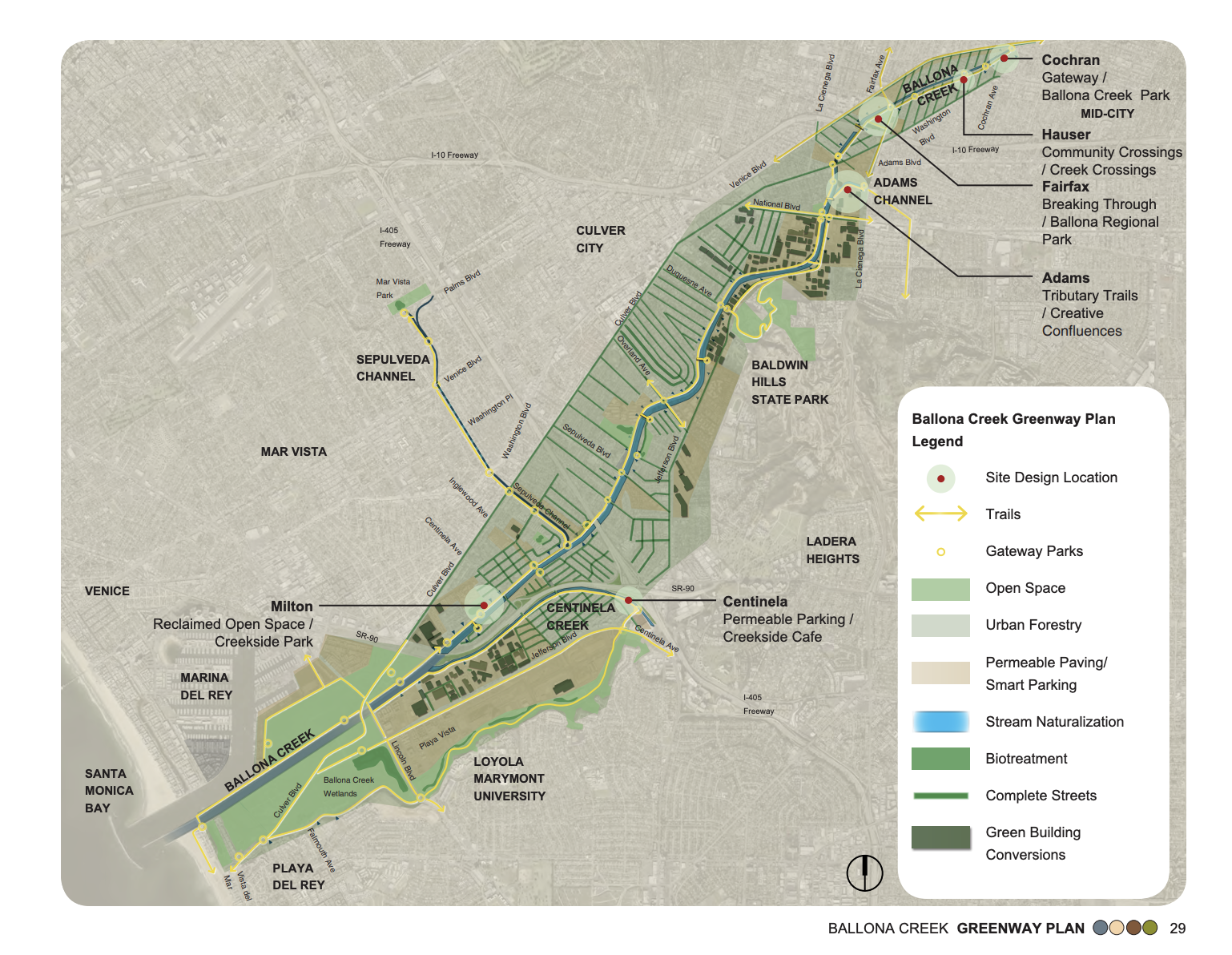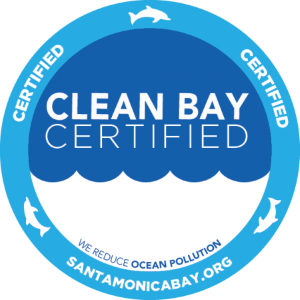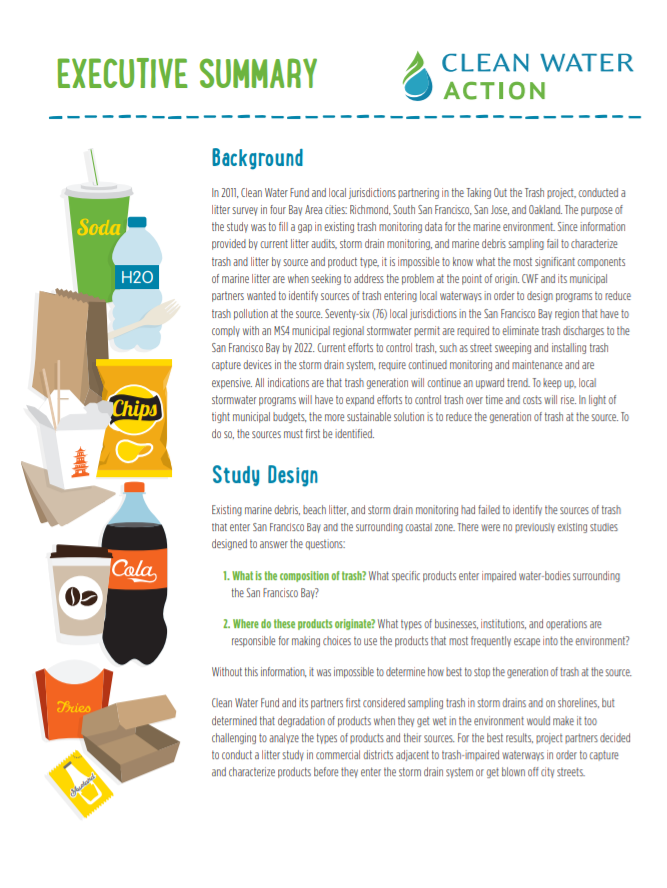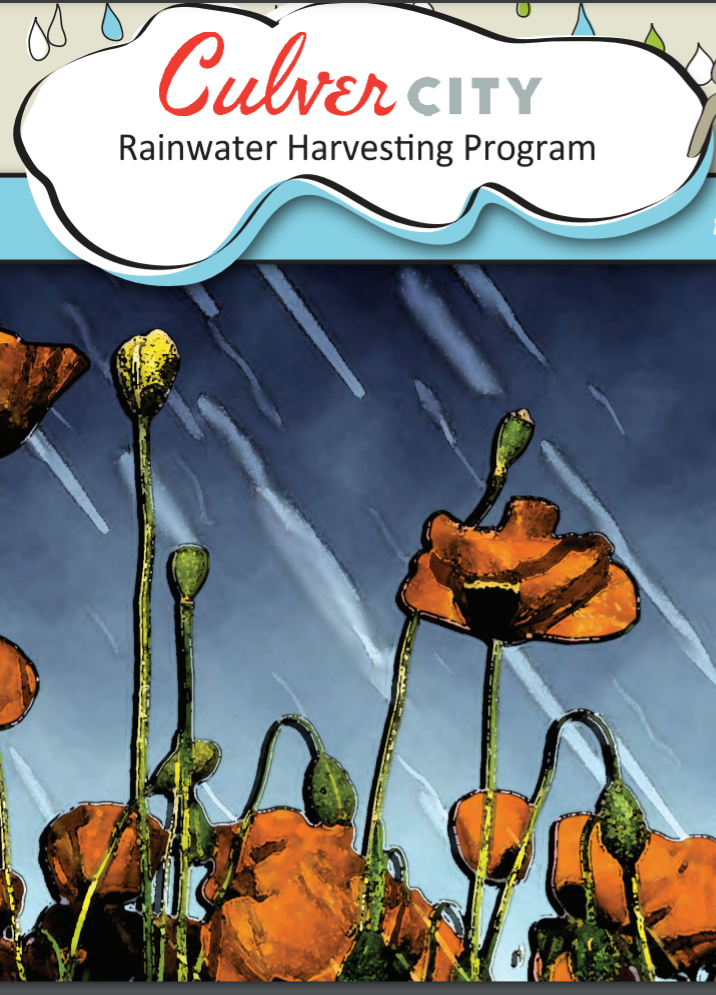The Ballona Creek Greenway Plan describes opportunities to reconnect residents with their creek, create a green corridor of trails and points of access, enhance habitat, mitigate stormwater runoff, redevelop land to improve watershed functions, re-establish riparian areas, and increase the health and sustainability of the region. The Reach Plans summarize design opportunities in general terms,… Continue reading Ballona Creek Greenway Plan
Topic Category: Engaging Communities
Letter of Support for the Clean Bay Restaurant Certification Program from the Regional Water Quality Control Board
Check out the Clean Bay Restaurant Certification Program’s letter of support from the L.A. Regional Water Quality Control Board.
2011 Clean Water Action Study
In 2011, Clean Water Fund and local jurisdictions partnering in the Taking Out the Trash project, conducted a litter survey in four Bay Area cities: Richmond, South San Francisco, San Jose, and Oakland. The purpose of the study was to fill a gap in existing trash monitoring data for the marine environment. This study results… Continue reading 2011 Clean Water Action Study
Culver City Rainwater Harvesting Program: A Homeowner’s “How-To” Guide
The City of Culver City Rainwater Harvesting Program is designed to help homeowners learn to capture rainwater for beneficial use, and reduce the amount of rainwater flowing from their roofs into the storm drain system. This free “how-to” guide will help you implement the first steps of harvesting rainwater.
Clean Bay Certified Restaurants
The proper management of these wastes can make a significant improvement in the health of Santa Monica Bay. In 2008, The Bay Foundation (TBF) launched the Clean Bay Restaurant Certification Program (aka Clean Bay Certified) to recognize restaurants that integrate sustainability and ocean-mindedness into their business practices. Clean Bay Certified identifies… Continue reading Clean Bay Certified Restaurants
Clean Boating
With four million boaters, California has one of the highest levels of recreational boating in the United States. This large volume of recreational activity in our waterways can come at a cost. Boat-based pollutants such as sewage, used oil, household hazardous waste, marine debris, aquatic invasive species, and emerging contaminants impair our waterways. To protect… Continue reading Clean Boating
Rainwater Harvesting and Rain Gardens
Water is a scarce resource in southern California. Despite its scarcity, it’s wasted as a resource when it’s streamlined into Santa Monica Bay via gutters, streets, and storm drains. As rainwater flows over urban hardscapes, it collects trash, oil, grease, and other pollutants along the way, ultimately flowing into and degrading Santa Monica Bay. The… Continue reading Rainwater Harvesting and Rain Gardens
ReThink Disposable
ReThink Disposable is a technical assistance program of Clean Water Action and Clean Water Fund. The objective is to prevent excess waste before it starts. The program works with local governments, businesses, and consumers to minimize single-use food and beverage disposable packaging. In doing so, restaurants and other food business operators cut costs and improve… Continue reading ReThink Disposable
Table to Farm
Food that decomposes in a landfill releases methane, a greenhouse gas 86 times more potent than carbon dioxide. By composting locally, we reduce transportation associated with hauling waste to faraway processing facilities, which lowers smog-forming air pollutants and carbon dioxide emissions. Simultaneously, the application of compost builds healthy soils, increases water retention, and enhances soil… Continue reading Table to Farm
Water and Energy Conservation for L.A. Middle School Students
We would like to thank the teachers and students of Girls Athletic Leadership School (GALS LA) in Panorama City, Los Angeles Academy of Arts & Enterprise (LAAAE) in Downtown LA, and Thomas Alva Edison Middle School in South Los Angeles for letting us test and revise the materials. We would like to especially thank LADWP… Continue reading Water and Energy Conservation for L.A. Middle School Students



